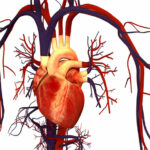GI News Briefs
What’s best for baby?
Being born big is not better when it comes to babies. We now know from a number of studies that a baby’s birth weight can set the pattern for life, predicting long-term risk of obesity and chronic disease. A new study published in the American Journal of Clinical Nutrition suggests that the GI of the mother’s diet during pregnancy may be another important key to producing a healthy weight baby who will grow up to be a healthy child and adult. The study compared the effects of two diets on 62 healthy pregnant women. The overall quality of both the diets was good, with food and nutritional intakes in line with recommendations for pregnant women. Lead researcher Dr Robert Moses writes that the babies of the mothers eating the low GI diet were of normal size, but were smaller and had less body fat than the babies of the mothers eating the moderate–high GI ‘high fibre-low sugar’ diet during the pregnancy. Interestingly, the women in the low GI group were more likely to report that they found the diet easy to follow than the women in the high fibre-low sugar group. One of the researchers, Prof Jennie Brand-Miller, told GI News that: ‘I think the most important take home message from the pregnancy study is that the GI appears to have a more important effect on birth weight than any single dietary factor, including amount of protein, fat or amount or carbohydrate.’
– AJCN 2006;84:807–12
![[BABY]](https://glycemicindex.com/blog/november2006/baby250.jpg)
Eat to beat acne
A diet rich in lean protein and low GI carbs can improve acne by 50 per cent in 12 weeks or less according to researchers from Australia’s RMIT University. These results are similar to that seen in published trials with successful topical therapies. The group presented their findings at the European dermatology conference in Greece in September. The detailed article describing the study methods and results is currently being peer reviewed and will be published in a scientific journal in 2007.
For the 12-week trial, 43 teenage boys with moderate to severe acne were randomly assigned either to a low GL (45% carbohydrate and 25% protein) diet including low GI carbs and lean protein or the control diet including carb staples with a moderate to high GI. Each boy was given an individualised dietary plan along with some training in using food scales and keeping food records. Low level acne skin wash was standardised for all the boys and their acne was assessed every four weeks by an expert dermatologist who did not know the dietary group of the subjects. According to lead researcher Dr Neil Mann, ‘the acne of the boys on the higher protein-low GI diet improved by more than half. This diet reined in the high insulin levels that could be responsible for acne. When you go through puberty you produce a lot of growth hormone that actually makes you temporarily insulin resistant. In conjunction with a high glycemic load diet common in western societies this causes chronically high insulin levels. With such high levels of insulin you’re going to get blockages in the pores and extra oil building up under the skin. A diet high in processed foods pushes glucose and insulin levels higher, exacerbating the problem, but low GI foods do the opposite. Low GI carbohydrates and lean protein-rich foods help to reduce insulin levels that affect the hormones associated with acne.’
![[CHART]](https://glycemicindex.com/blog/november2006/chart200.gif)
Macronutrient composition of the low GL diet
What hormone’s that?
Acne is formed when the sebaceous gland (oil gland) produces extra sebum (oil). At the same time the gland becomes blocked due to cells lining the follicle duct expanding under the action of insulin related growth factors such as IGF-1. This causes a build-up of sebum within the gland which gets bigger. As a result bacteria grow within the gland and eventually bursts causing inflammation and redness. The main hormones that play a role are:
![[LESION]](https://glycemicindex.com/blog/november2006/lesion232.gif)
- Androgens (male hormones)
When the levels of active androgens increase it causes more oil to be produced within the gland. - Insulin-like growth factor -1 (growth hormone)
When IGF-1 becomes more active, it causes the gland to become blocked.
For more information contact: neil.mann@rmit.edu.au







